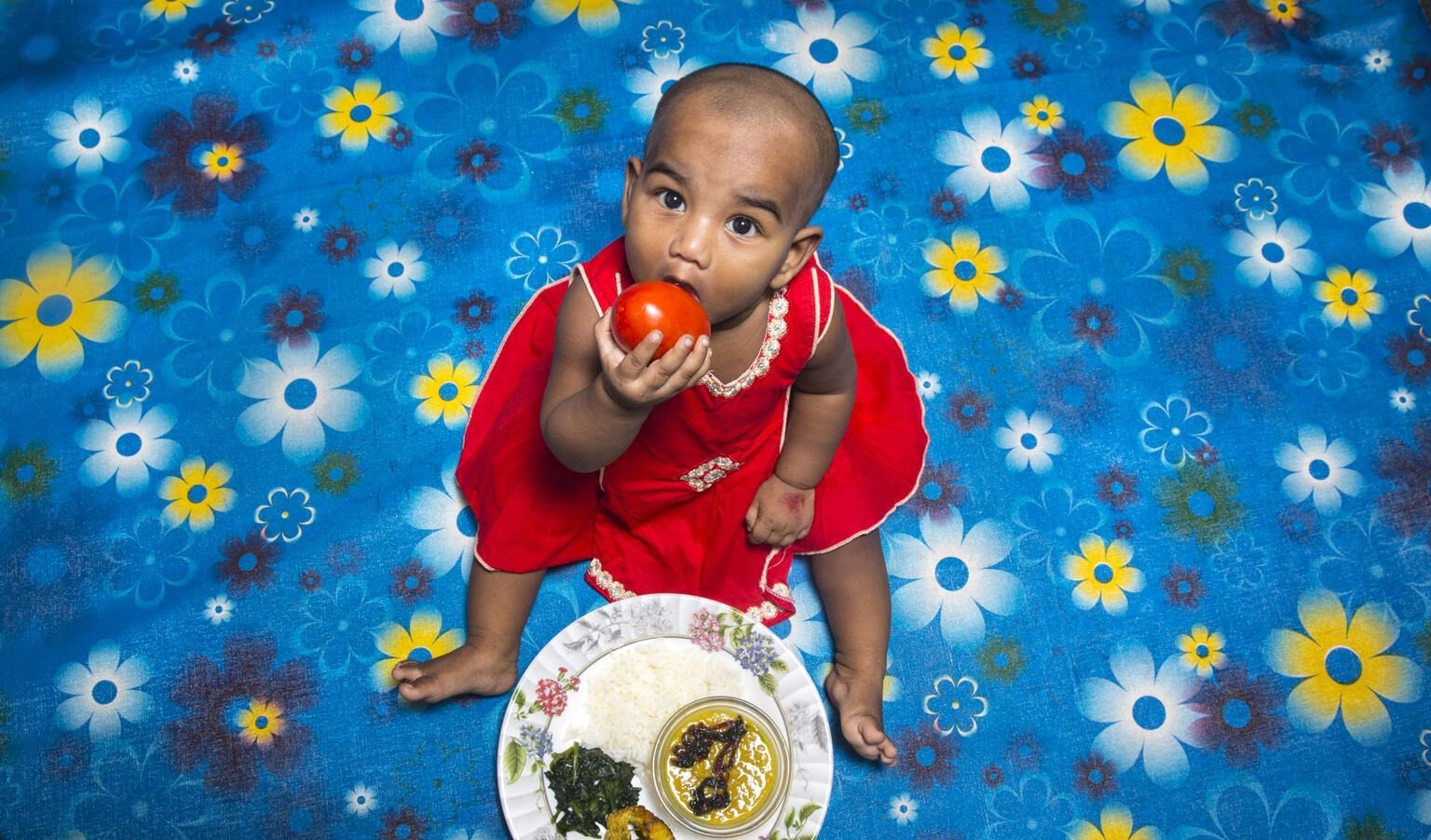Can you help children receive nutritious food?
An estimated 45 per cent of all deaths in children under 5 are caused by child hunger and malnutrition. But thanks to supporters like you, UNICEF is reaching millions of children with life-saving treatment every year, helping to turn the tide against the global malnutrition crisis. Can we count on your support?
Eating the rainbow: how parents can help their children grow
Good nutrition is the bedrock of child survival and development.
But today, many children are not getting the foods they need to survive and thrive.
Poor diets in early childhood can lead to deficiencies in essential vitamins and nutrients and affect how a child grows and develops, both physically and mentally.
Meeting children’s nutrient needs in early life can be challenging, and many parents face barriers to securing enough nutritious, safe, affordable and age-appropriate food for their children.
This is especially the case for the most vulnerable children: the youngest, the poorest and those trapped by humanitarian crises.
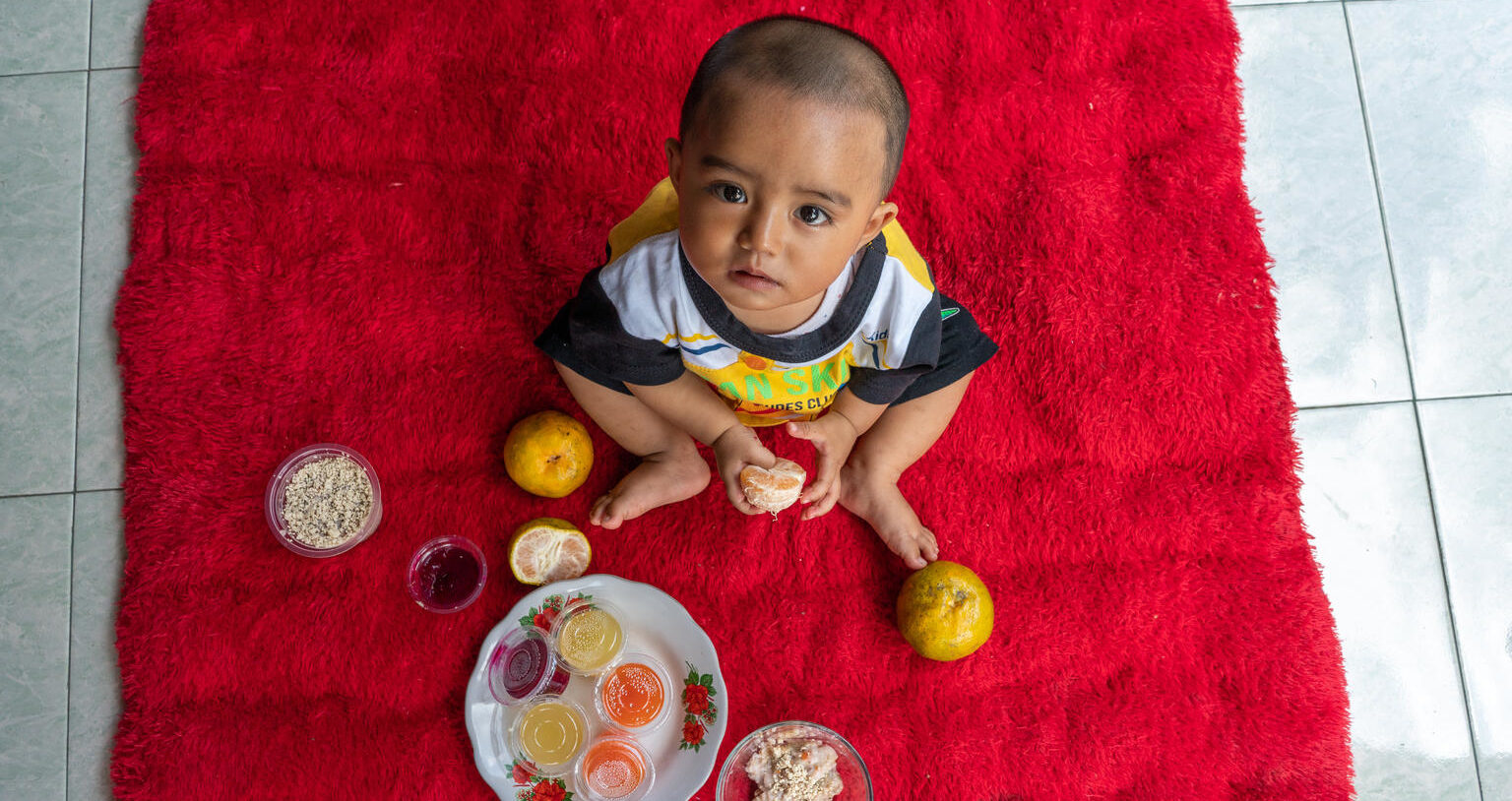
Sakha, 8 months, with some healthy fruit in Indonesia.
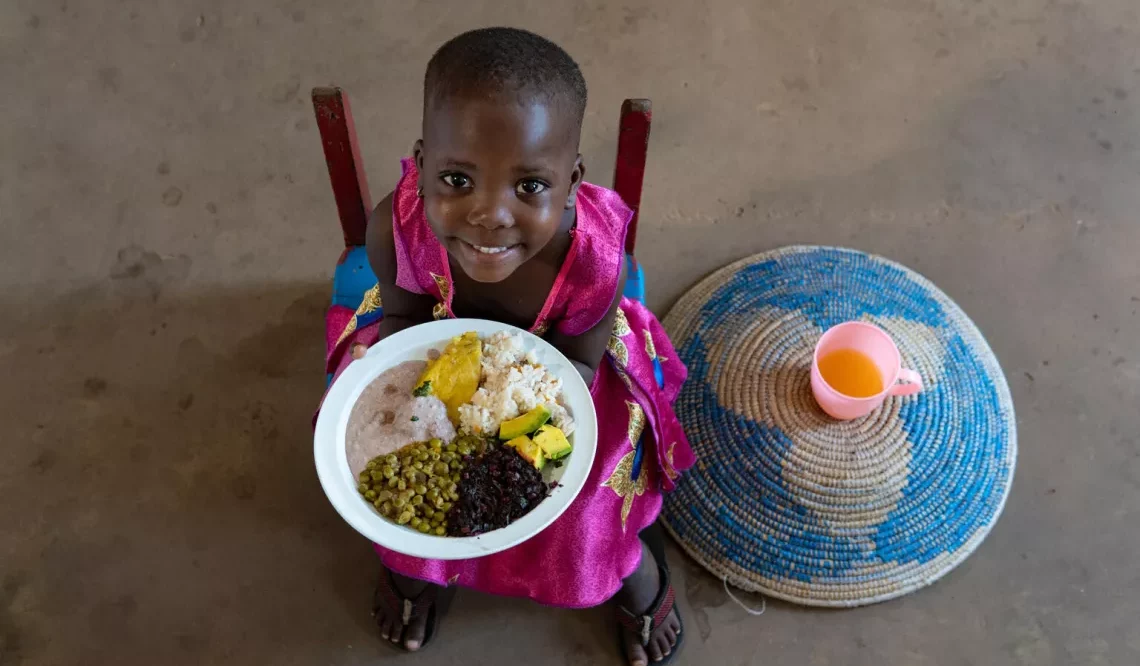
Nakalema, 3, shows her nutritious dish of rice, banana and avocado in Uganda.
Globally, one in three children aged 6 – 23 months is eating the minimum diverse diet needed for healthy growth and development.
At the age of 6 months, children need to begin eating their first foods. Young children should be fed frequently and in adequate quantities throughout the day, and their meals must be nutrient-dense and comprised of a variety of food groups.
Sadly, because of events beyond their control, many parents can’t give their children the foods they need. The result is that young children’s diets are frequently comprised of all that is locally available, such as grains or rice – with little fruit, vegetables, eggs, dairy, fish or meat.
One of the ways UNICEF helps parents ensure their children are eating the right foods is to introduce them to the colours of the food rainbow.
Eating the rainbow means giving their children different coloured fruits and vegetables every day, so they grow up strong and healthy.
How to eat the rainbow
? Red
Tomatoes, cherries, apples, strawberries, watermelon, red onions and peppers: help to improve heart health and brain function.
? Orange and yellow
Carrots, sweet potato, pumpkins, oranges, bananas and mangoes: help to strengthen the immune system and vision.
? Green
Spinach, peas, cucumber, broccoli, kiwis and pears: help with a healthy immune system and are a good source of fibre.
? White and brown
Cauliflowers, nuts, mushrooms, radish, onions and leeks: reduce cholesterol and improve bone strength.
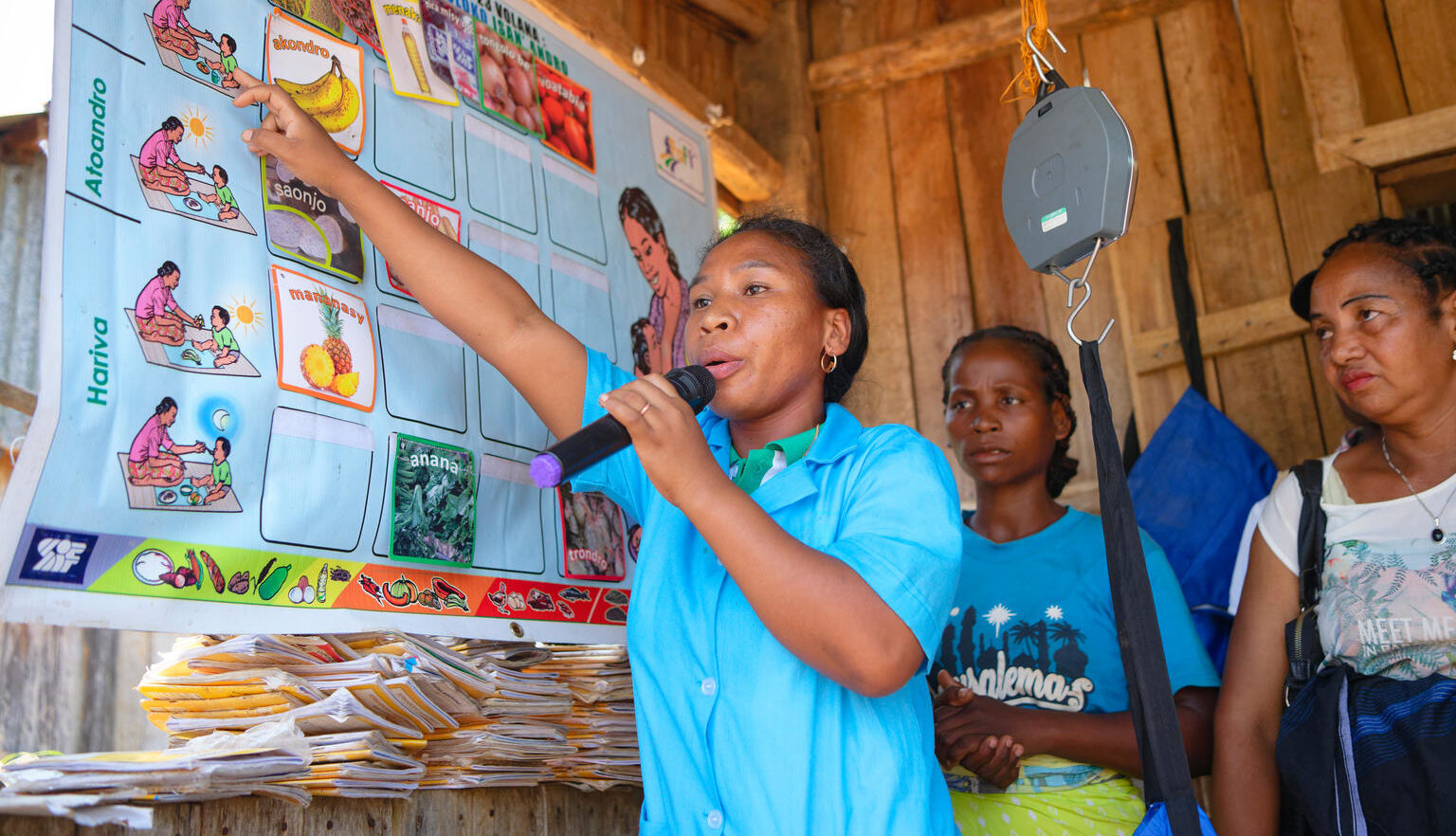
A community worker in Madagascar explaining the benefits of a varied and colourful diet for children.
? Blue and purple
Blueberries, blackberries, aubergines, beetroot, passion fruit and plums: improve brain health and memory.
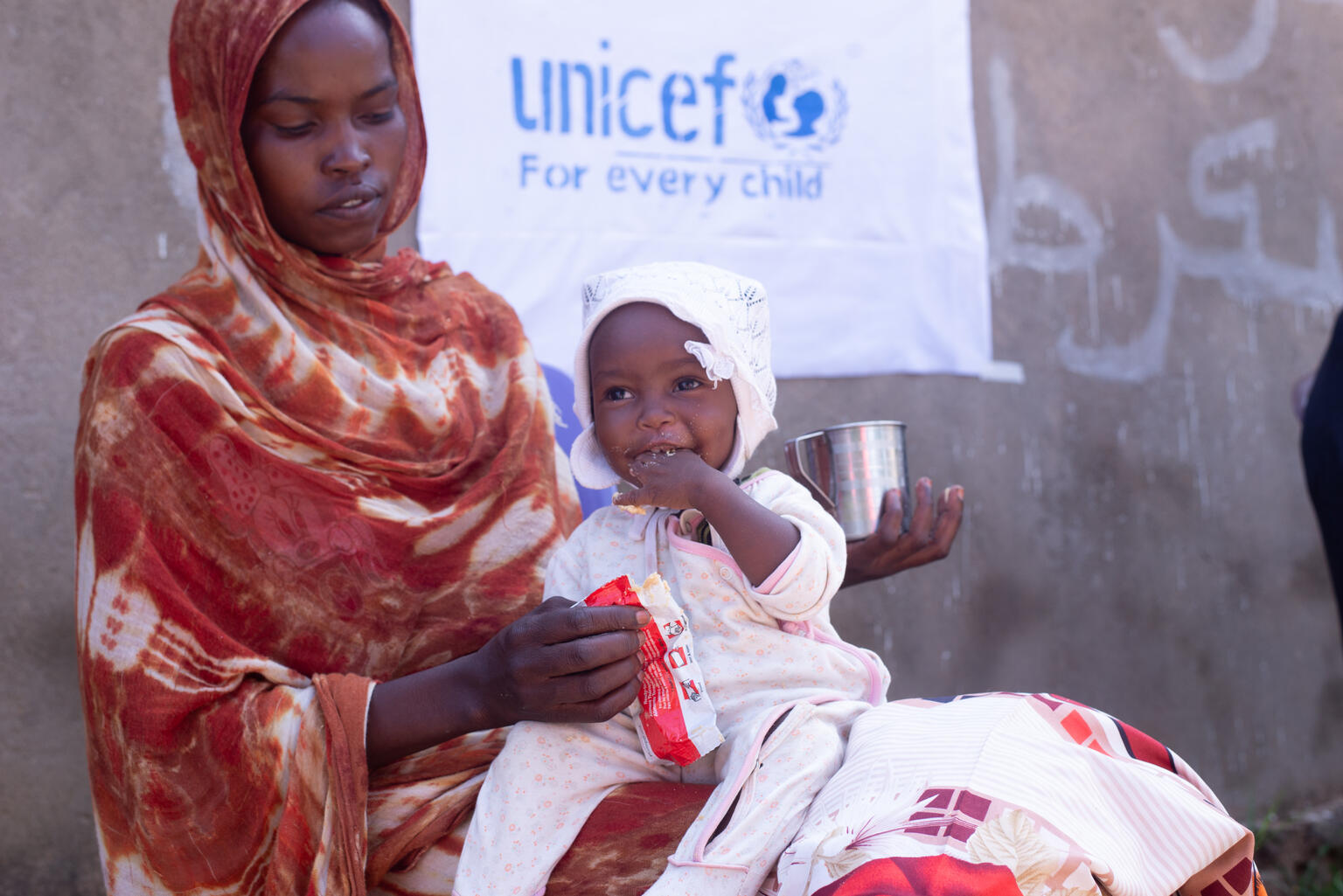
13-month-old Khadija, who is suffering from malnutrition, eats ready-to-use-therapeutic food at Elhmedia health centre in Sudan.
Preventing malnutrition on a global scale
Globally, at least one in three children under the age of 5 suffers from malnutrition in its most visible forms: undernutrition or overweight.
That is why improving the quality of children’s foods and feeding practices in the earliest years of life is the cornerstone of preventing malnutrition in all its forms.
UNICEF runs nutrition programmes in 130 countries. Our early childhood nutrition programmes aim to prevent malnutrition by supporting breastfeeding and helping parents access nutritious, safe and affordable foods.
Where nutritious diets are out of reach, we support the use of multiple micronutrient powders and foods fortified with minerals and vitamins to improve the quality of children’s diets.


